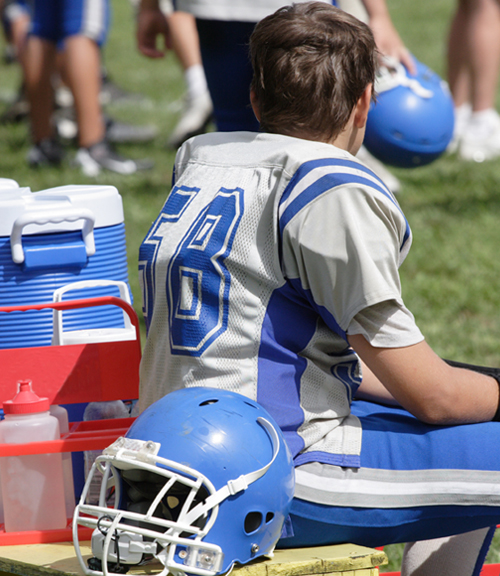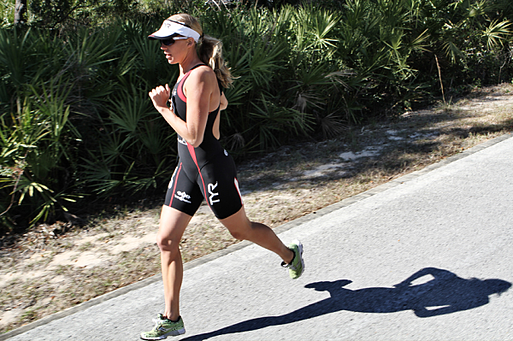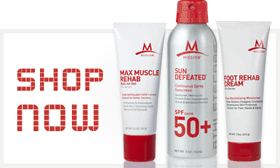
We are solidly into August now, and for many athletes, that means they are enduring long, hot practices in the brutual sun and heat. If you are the parent of an athlete, you are likely looking for some information on how to help keep your kid safe as he or she heads into pre-season practices.
At MISSION we work with leading scientists, trainers and athletes to help athletes protect their bodies and perform their best. Cooling is top of mind among our partners, as they continue to work to help keep you cooler, so you can go harder. This year we have introduced our Enduracool Instant Cooling Helmet Liner and the Enduracool Instant Cooling Hoodie, developed for Football and other team sports to specifically address the sideline and in game needs of players who experience overheating.
But, cooling the skin is one of several important prevention practices to combat overheating. So,while we have been talking about staying cool during the summer in several blog articles; today we wanted to specifially address athletes and ways to help them stay cool at practice. To that end, we wanted to share information that was published by the Korey Stringer Institute and Gatorade www.ksi.uconn.edu in the 2013 Gatorade Heat Safety Kit.
They have given 10 tips for staying cool. Check them out below and let us know if you have any other recommendations that have helped you or your kid out in the past.
Good luck with pre-season and stay cool!
1. ALLOW FOR ACCLIMATION - While it can take 10-14 days for an athlete's body to adapt to the heat, acclimation should start two weeks before team practices begin. An athlete should start with 15-20 minutes of continuous exercise outside in the heat, and add 5-10 minutes each day.
2. ADOPT REHYDRATION STRATEGY - Hydration helps reduce an athlete's risk of heat illness and can help the athlete maintain a high level of performance. Proactive steps athletes can take to avoid dehydrat ion include:
• Weigh in and out before and after activity
• Drink enough fluid to minimize weight loss -for each pound [16 oz.) that is lost , he or she may need to consume 20 ounces after athletic activity to fully rehydrate.
• Check urine. If ifs li e pale lemonade, thafs a sign of good hydration.
3. DRINK UP - Athletes should drink enough fluid to prevent dehydration without ove r-drinking. Flavored, cold, lightly salted sports drinks (ie Gatorade) are important because sodium helps maintain the physiological desire to drink and helps retain the fluid consumed.
4. BUDDY UP AND KNOW THE SIGNS - Encourage athletes to buddy up with a teammate and watch out for each other when ifs hot and humid. They should know the signs and symptoms of heat illness which can include:
• Nausea
• Headache
• Weakness
• Poor concentration
• Personality change
• Flushed skin
• Loss of muscle coordination
• Fatigue
• Fainting
• Light headedness
• Vomiting
5. COOL THE BODY - If experiencing heat illness, an athlete should take steps to cool the body , including lying in a cool place with legs elevated , applying cool towels (ie Enduracool!) to the body and drinking cool fluids.
6. BE FLEXIBLE -An important step in avoiding heat illness is adjusting practice or game length and intensity to the environmental conditions. If possible , athletes should avoid strenuous and high intensity activities during the warmest time of day [10 am- 4 ptn).
7. DRESS FOR THE WEATHER -Keeping cool in hot weather means being mindful of appropriate clothing and equipment that can help evaporate heat from the body:
• Wear light-colored clothing
• Wear t-shirts and shorts, not pads
• Remove helmets when not active
• Avoid wearing excess clothing
• Change sweat-s oaked clothing frequently
8. FIND TIME FOR RECOVERY - Rest and recovery are an essential part of avoiding heat illness. Athletes should work in times for breaks when active throughout the day, attempt to get six to eight hours of sleep a night and sleep in a cool environment, if possible.
9. MAINTAIN A HEALTHY DIET - Athletes need to think about fueling before, during and after physical activity. He or she should be fully hydrated with fluids and fueled with foods that contain electrolytes to maintain fluid levels. Fluids lost through sweat and breathing should be replaced by fluid consumption including during workouts, practices and games [physical activity).
10. HAVE AN EMERGENCY PLAN - Have a plan to contact medical professionals in an emergency. Also keep a "cool pool, or ice bath nearby so medical personnel can choose to immerse athletes suffering fro m heat stroke if necessary.







